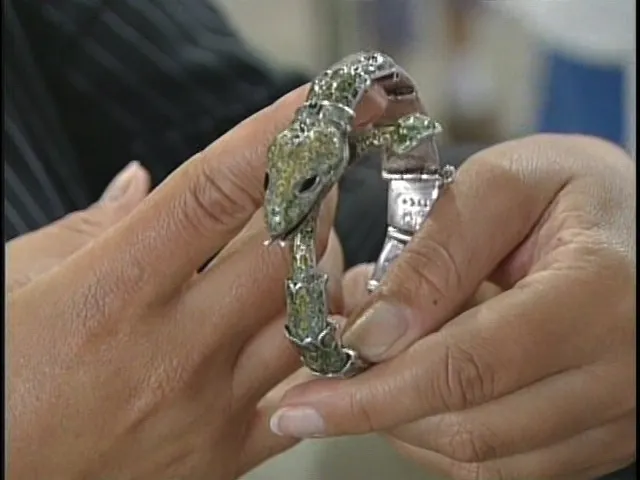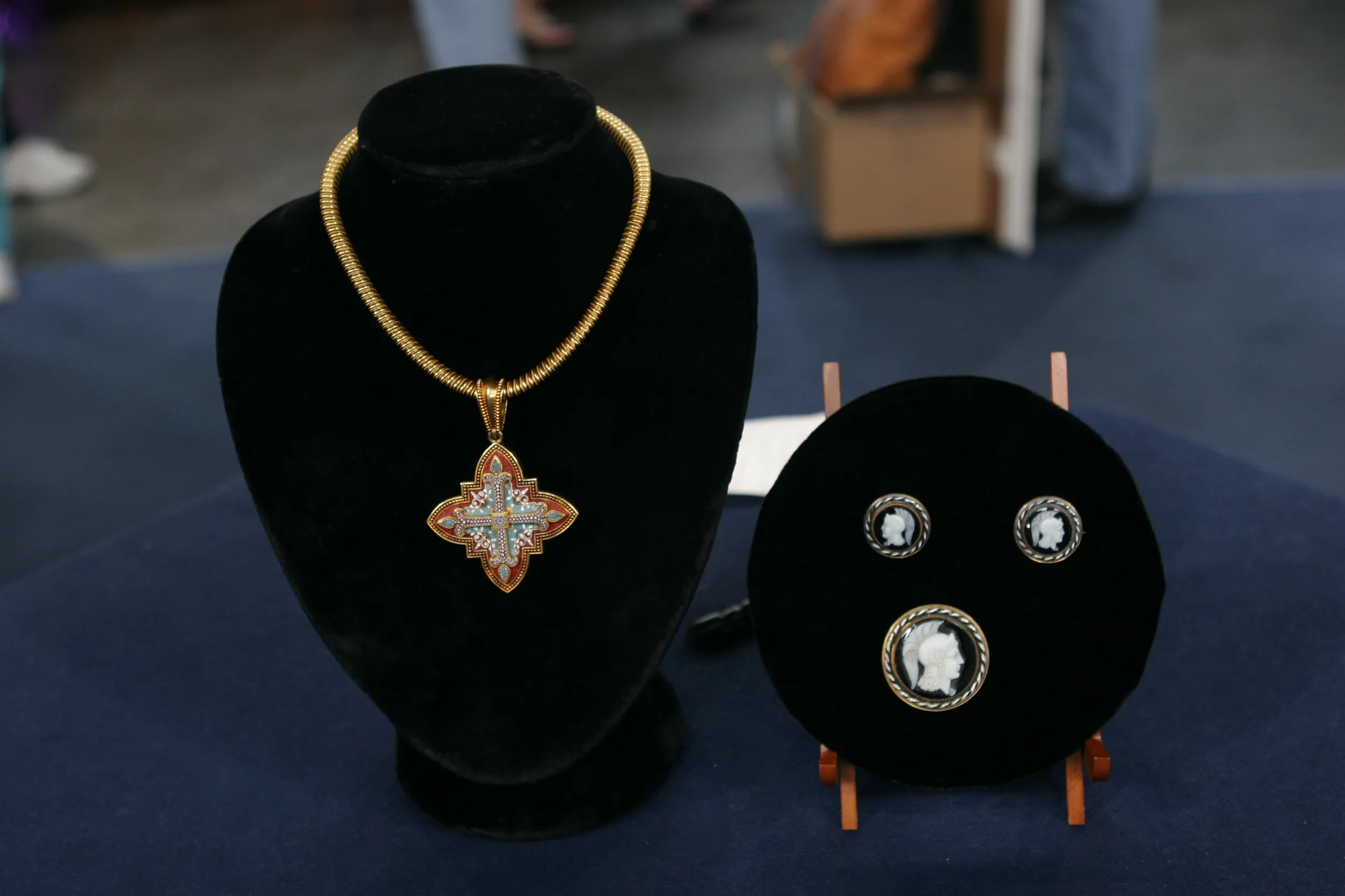1910 - 1911 Philadelphia Athletics Trophy, Card & Pin
GUEST: My great-grandfather is a major league pitcher for a while, and in 1910, he won the World Series with the Philadelphia Athletics. The pin he was awarded from the team, and then the trophy itself is from the city of Philadelphia that was presented to him. Everybody said, Grandpa always told me that he had this trophy for me.
APPRAISER: Mm-hmm.
GUEST: He wanted me to have it, but he could never find it. When he did pass, my mother went down to Kentucky, to where he lived, dug through everything she possibly could find...
APPRAISER: Yeah.
GUEST: ...and then she did find it for me. After I inherited the trophy and the pin, I did a little research and found s... I'm like, there's got to be a baseball card of him somewhere.
APPRAISER: Mm-hmm.
GUEST: So probably about three years ago now, I found an online auction and paid about $300 for it.
APPRAISER: Okay. The Philadelphia Athletics were one of the first baseball dynasties. This is the 1910 World Championship team. But they also won the World Series championship in 1911, 1913, as well as 1929 and 1930.
GUEST: Oh, jeez.
APPRAISER: But that run between… of 1910, 1911, and 1913 of three World Series championships in four years, you know, really made them one of the first early baseball dynasties. They had some real remarkable players that your great-grandfather got to play beside.
GUEST: Mm-hmm.
APPRAISER: He got to pitch alongside Jack Coombs...
GUEST: Mm-hmm.
APPRAISER: ...and then eventual Hall of Famers Eddie Plank
GUEST: Eddie Plank.
APPRAISER: and Chief Bender. So, with your great-grandfather, we read that his legal name was Francis M. Atkins.
GUEST: Yep.
APPRAISER: The trophy engraved it as Frank M. Atkins. But on his baseball cards and on all the articles written about him, he always went by Tommy.
GUEST: Right.
APPRAISER: Tell us where he was from.
GUEST: I didn't know much about him. I did know he was born in Nebraska and, um, moved to Painesville, Ohio...
APPRAISER: Mm-hmm.
GUEST: ...in the early 1900-ish area.
APPRAISER: Right.
GUEST: And that's about all I know about his, his past. I know he played hi… played high school baseball
APPRAISER: Mm-hmm.
GUEST: and played a number of, uh, minor league and semi-pro teams
APPRAISER: Mm-hmm.
GUEST: in the area before making the majors.
APPRAISER: He had one start in 1909...
GUEST: (chuckles)
APPRAISER: ...at the end of the season.
GUEST: Mm-hmm.
APPRAISER: Resulted in a no-decision. And then in 1910, he was expected to actually go to the minor leagues. But he won a position on the big league roster. He had 15 appearances, 12 in relief.
GUEST: Yeah.
APPRAISER: He went 3-2.
GUEST: Mm-hmm.
APPRAISER: Had a 2.68 ERA.
GUEST: Yeah, not bad.
APPRAISER: And 29 strikeouts.
GUEST: Yeah.
APPRAISER: Unfortunately, he didn't pitch in the World Series.
GUEST: Yeah, I did know that, yeah. (laughs)
APPRAISER: So, Connie Mack, going into the World Series, he decided to condense that roster, and it was just Plank, Bender, and Coombs. They won that World Series against the Chicago Cubs four games to one. Unfortunately, not part of that roster in the World Series, but a full part of that team that season.
GUEST: Right.
APPRAISER: Which is why he was awarded the Loving Cup Trophy, the pin, as well as a $2,000 bonus.
GUEST: Right, yeah.
APPRAISER: That last appearance he had in 1910 would turn out to be his last appearance in the major leagues.
GUEST: Ah.
APPRAISER: So, on the baseball card that you were able to find of your great-grandfather, not only is it so cool because it's the best image that I've seen of him, but also that it is graded an ex-mint six, which is a really high grade for a card of that era. In fact, when I researched it, I was not aware of one that graded higher.
GUEST: Oh, really?
APPRAISER: That card, I would expect, at auction, to sell for, oh, somewhere between maybe $300 to $400.
GUEST: Yep, very good.
APPRAISER: Now moving to the Loving Cup Trophy. This is a fantastic trophy. And what's great is it's decorated on all sides.
GUEST: Right.
APPRAISER: So on the front we have here where it says Frank M. Atkins. Then we turn it here, and we have that fantastic enamel A's logo. And then we have the crossed bats and ball.
GUEST: Mm-hmm.
APPRAISER: I see that somebody started to polish the trophy?
GUEST: My parents probably wanted to see if they could polish it up when they first found it, um, about 20 years ago.
APPRAISER: Mm, yeah.
GUEST: And, and it hasn't been touched since. It's totally acceptable to finish polishing this.
APPRAISER: Oh, okay. And it will be beautiful once you polish it. This one, at auction, would bring $15,000 to $20,000.
GUEST: Wow. Wow. (laughs)
APPRAISER: And then, lastly, the pin. The pin– there's... I've only seen a couple from that… issued to players from that team in the 1910 World Series champions. That lapel pin would be the equivalent of a World Series ring to the players today.
GUEST: Right, mm-hmm.
APPRAISER: We know that it's gold, an actual diamond. On the back, there was no room to engrave the player's name, nor for them to even mark it. It would have been a very small number of them made by commission. And that would have been likely done by a jeweler right in Philadelphia. That one would sell at auction for between $50,000 and $70,000.
GUEST: Oh, my gosh. (laughs) (gasps)
APPRAISER: And I would say you're gonna want to put a value for insurance– they're family items...
GUEST: Mm-hmm.
APPRAISER: you'd want to insure the pin and the trophy for $125,000.
GUEST: Oh my gosh, wow.

$65,300 Auction
$125,000 Insurance
Photos
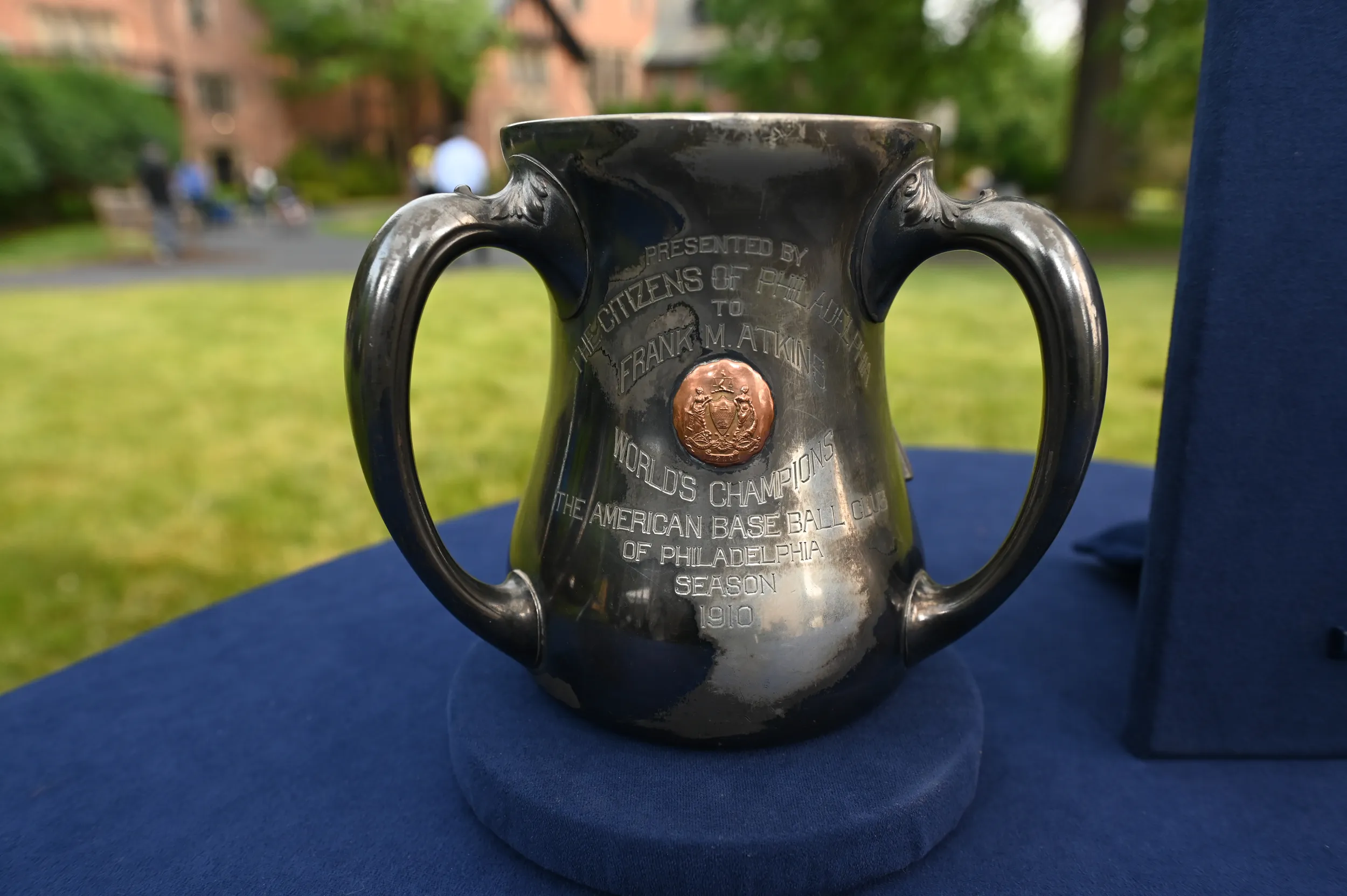
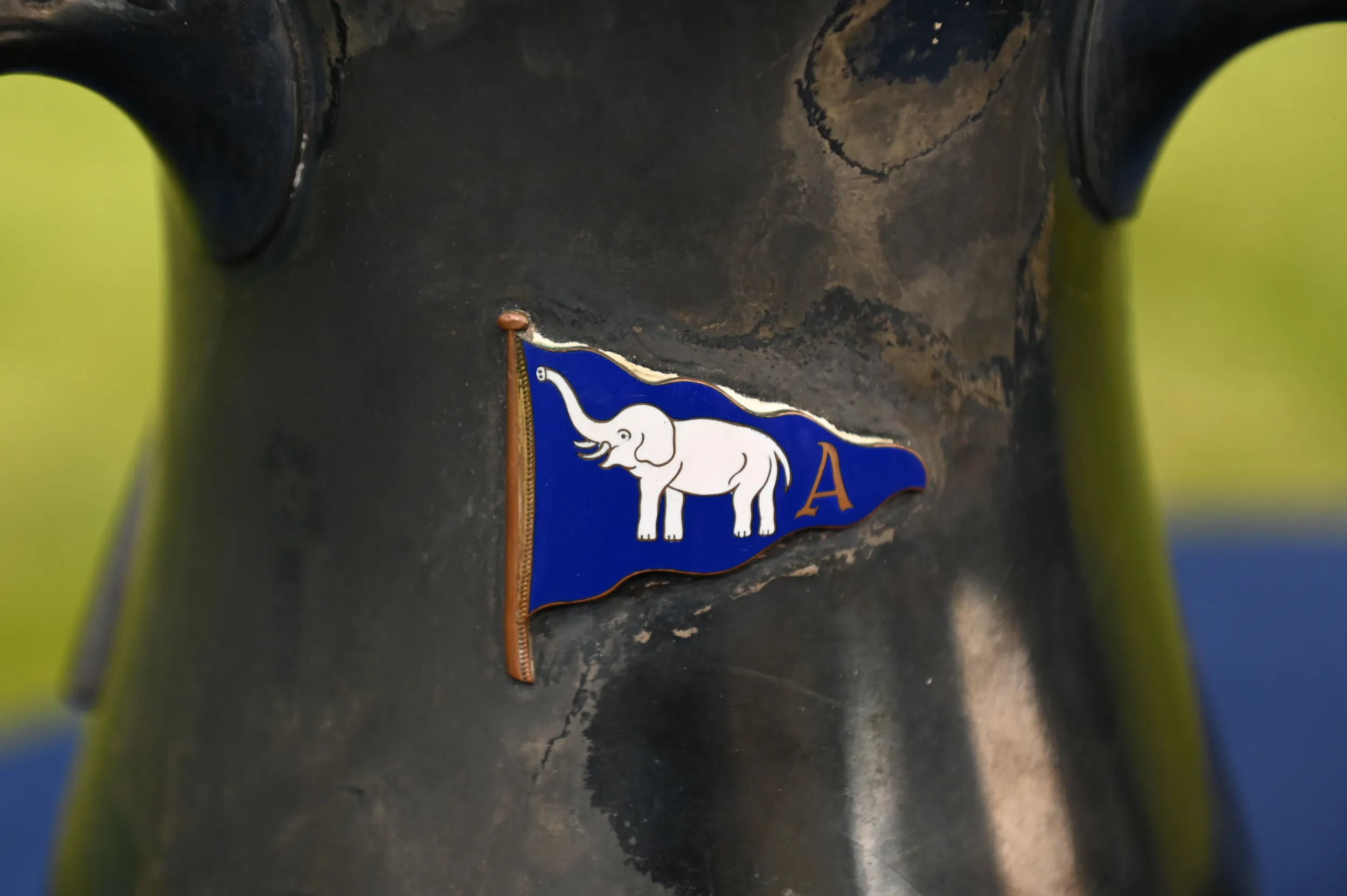
Featured In
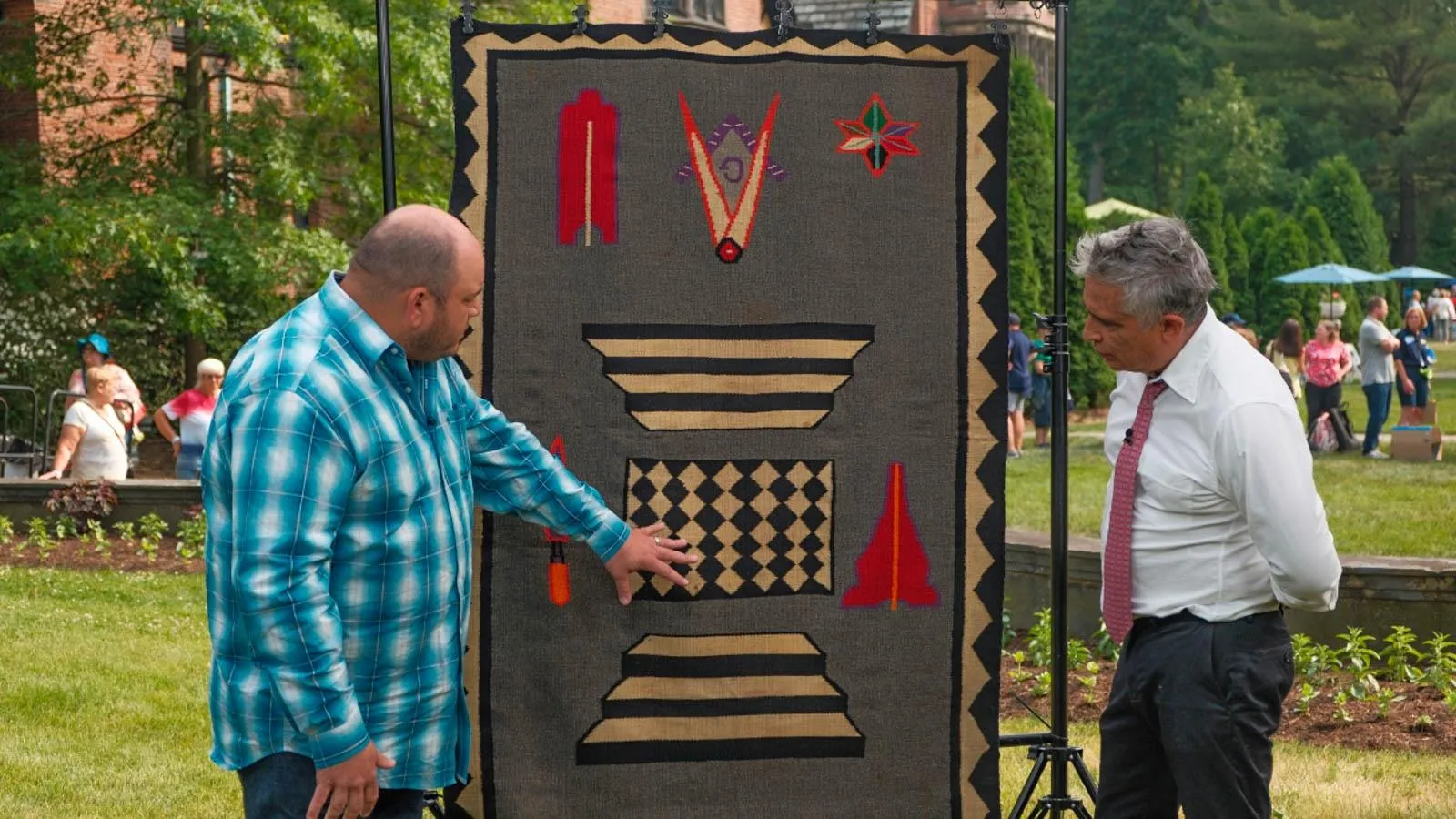
episode
Stan Hywet Hall & Gardens, Hour 2
Get wowed by treasures at Stan Hywet Hall & Gardens, like one valued at up to $125,000!
Jewelry
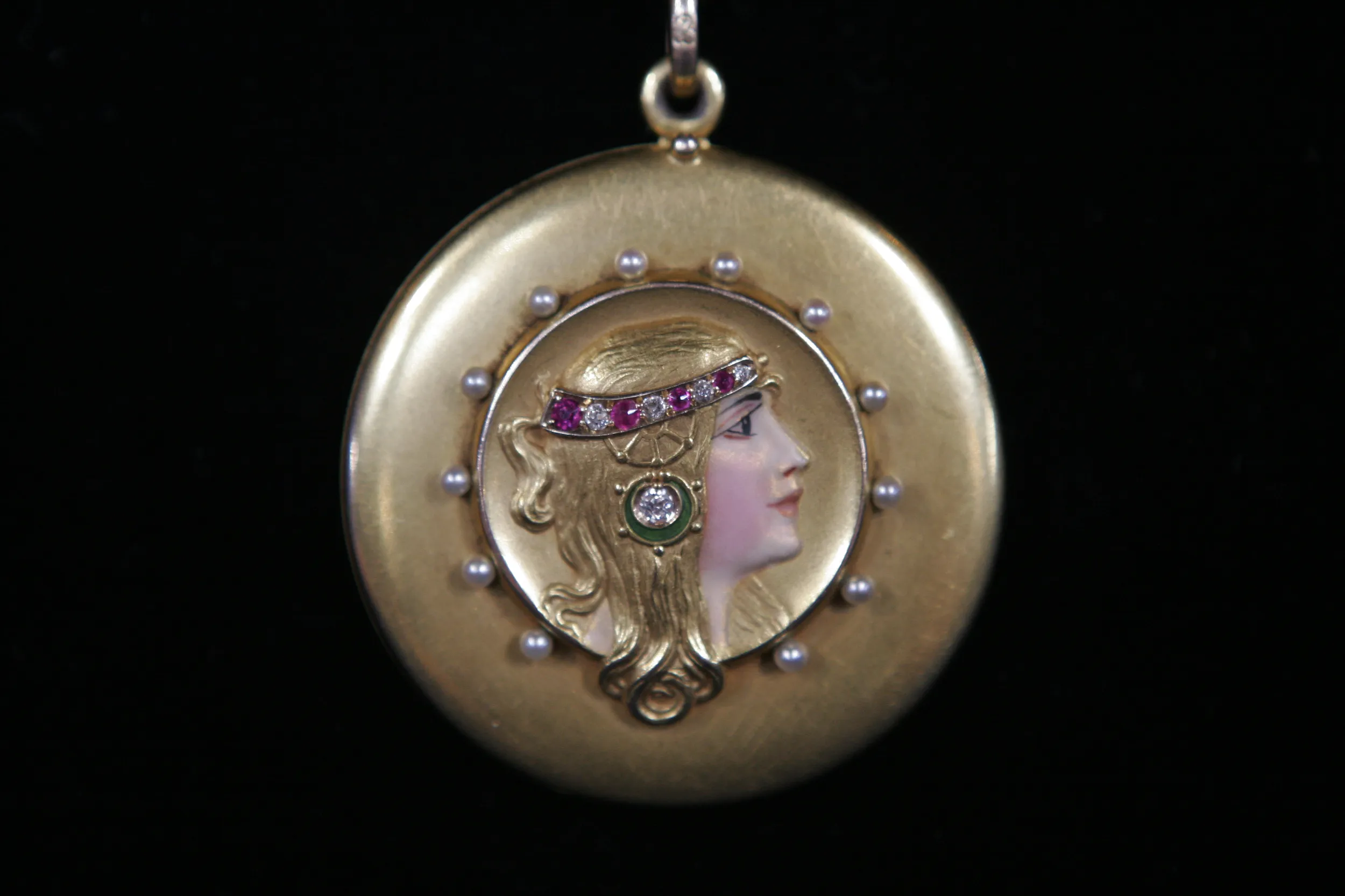
appraisal

appraisal
Understanding Our Appraisals
Placeholder
